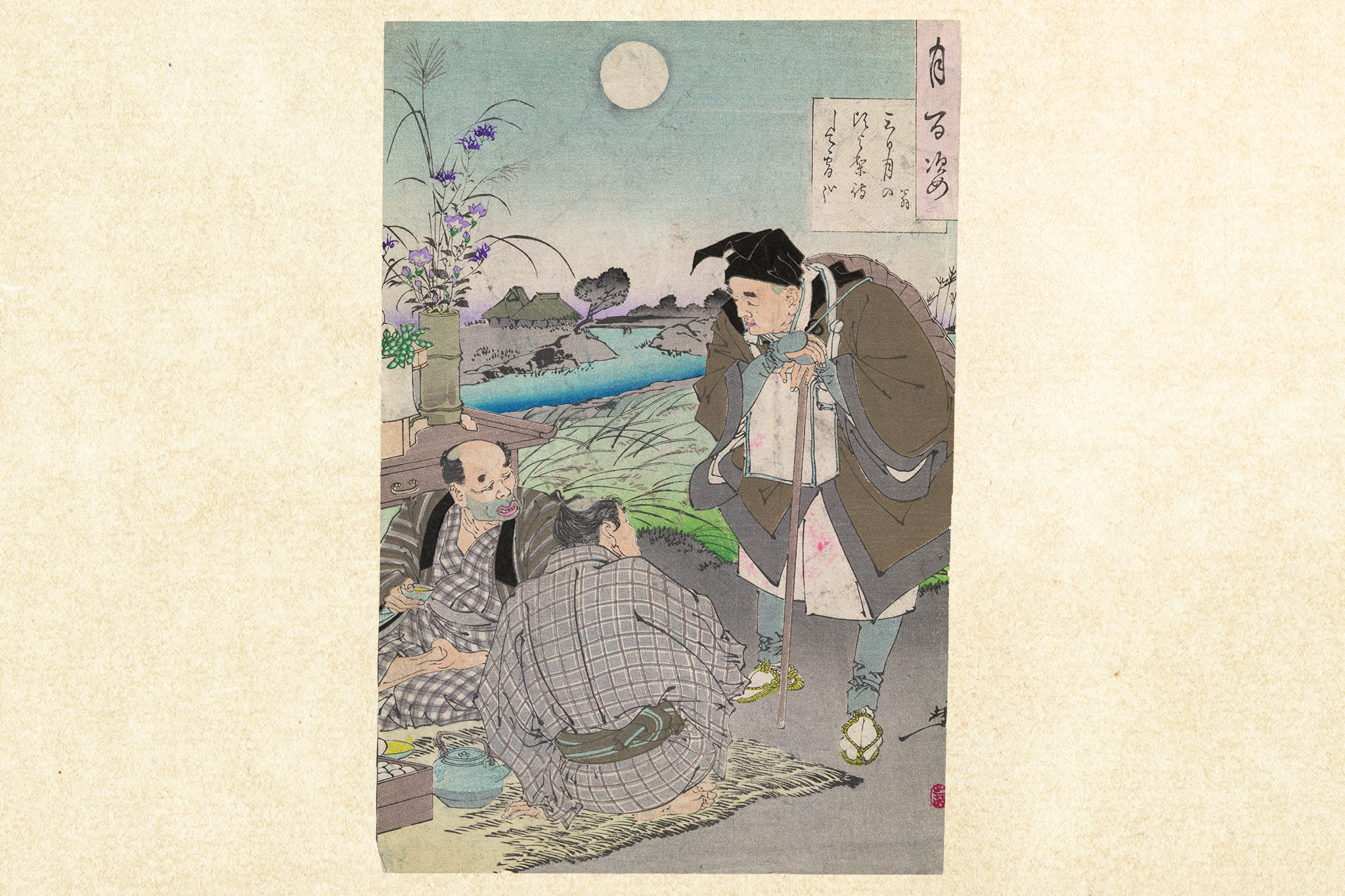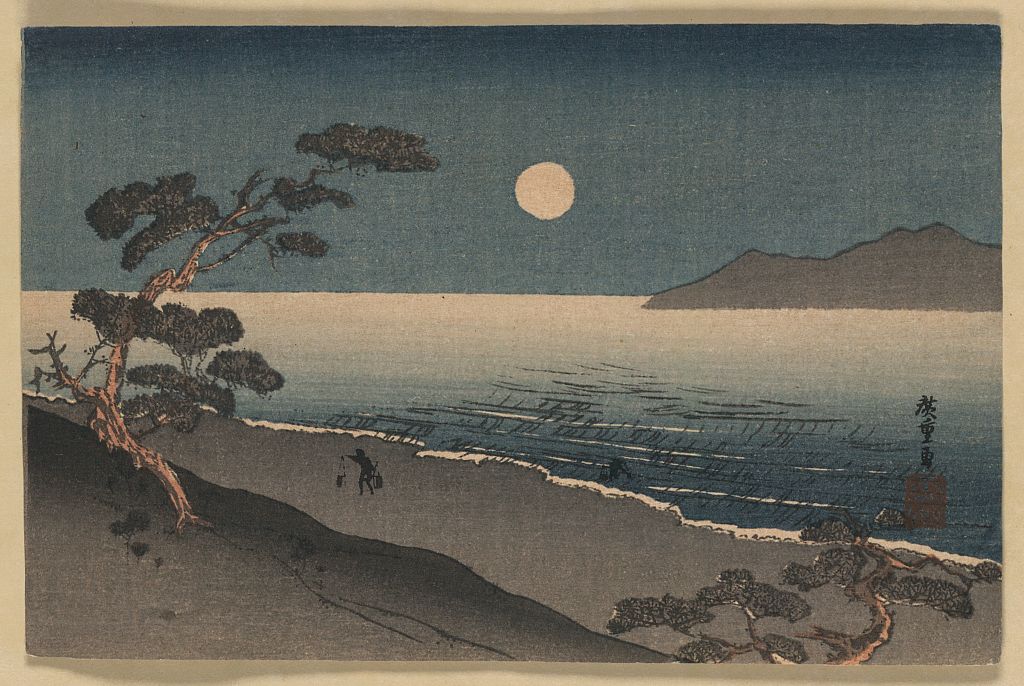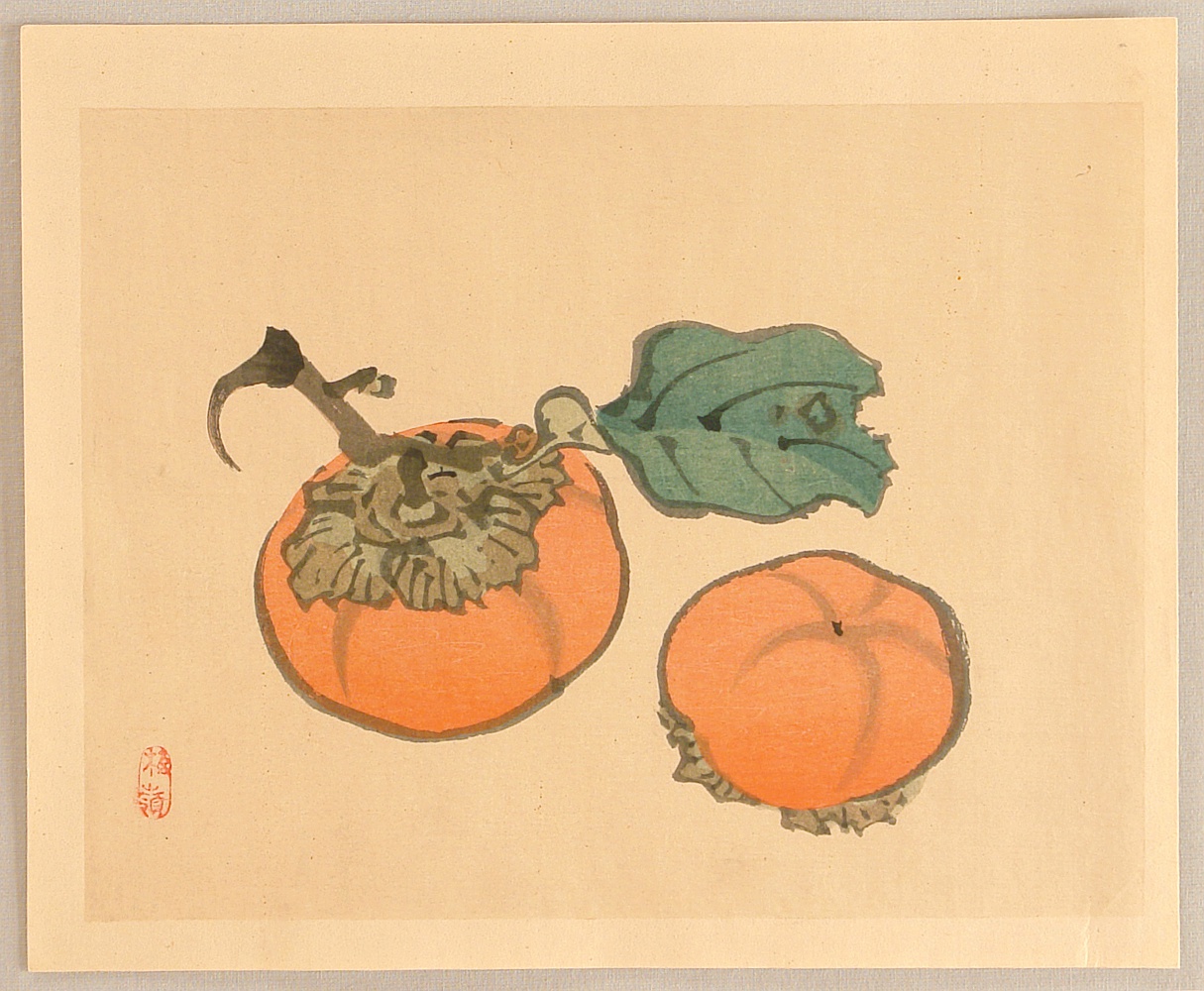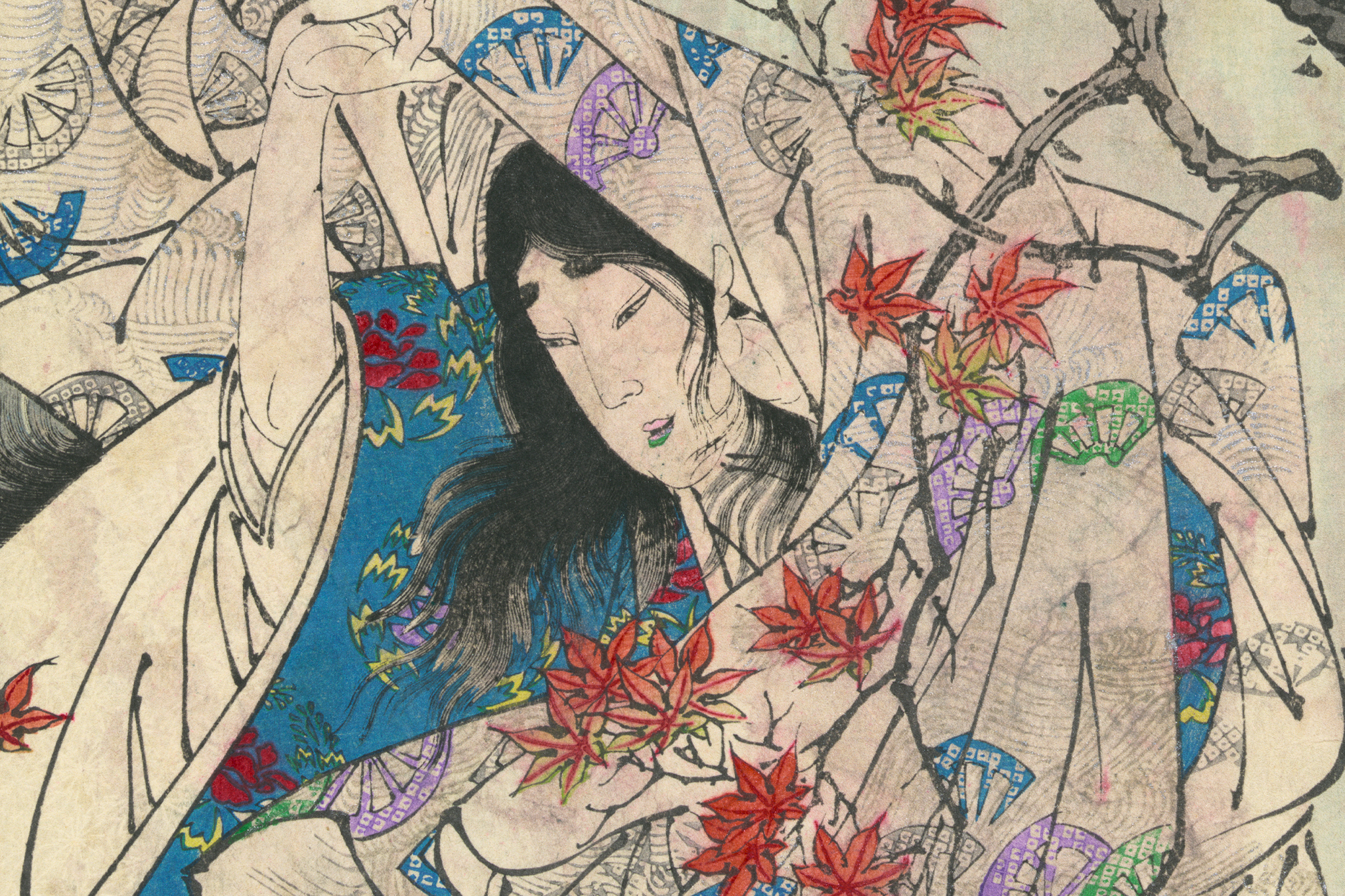Haiku is a poetry form known for compacting a lot of imagery and painting a scene in just 17 phonetic units (or syllables). These poetic capsules signify the season through a kigo (seasonal keyword). Seasonal keywords can range from the obvious, such as snowflakes for winter haiku, to the more subtle, such as deer for autumn haiku.
Aside from using the words “autumn” and “September,” some of the most prominent autumn haiku kigo are moon and tsukimi (moon-viewing), karita (harvested rice fields), scarecrows, crickets, deer and various fruits such as persimmons. It is the harvest season after all.
Having read through the works of Japan’s four greatest masters of haiku, namely Matsuo Basho, Kobayashi Issa, Masaoka Shiki and Yosa Buson, here are some of our favorite autumn haiku translated into English.

Print by Yoshitoshi Taiso shows the poet Matsuo Basho as an old man, a traveler, stopping to talk with two men having tea by the roadside.
Autumn and September
Starting from the straightforward seasonal keywords, there are many autumn haiku that punctuate the scene by exclaiming that it is autumn or September. This season also often doubles as a metaphor for getting older, the passage of time and nearing an end.
この秋は何で年寄る雲に鳥
(kono aki ha nande toshiyoru kumo ni tori)
In this autumntime,
why do I so feel the years?
In the clouds a bird
By Matsuo Basho | Translation by Andrew Fitzsimons from Basho: The Complete Haiku of Matsuo Basho
秋十年却って江戸を指す故郷
(aki totose kaette Edo o sasu kokyo)
Ten autumns it’s been
now I think of Tokyo
when I talk of home
By Matsuo Basho | Translation by Andrew Fitzsimons from Basho: The Complete Haiku of Matsuo Basho
長月の空色袷きたりけり
(nagatsuki no sorairoawase kitarikeri)
Late September is
wearing a sky-colored
lined kimono
By Kobayashi Issa | Translation by Zoria P.K.
September here is contained in 長月 meaning “long moon or month” and this time of year stands for late autumn, when the nights get longer and colder. The skies, however, are known to be crisp, clean and blue in this season.

Ukiyo-e print by Utagawa Hiroshige, digital image from Library of Congress
Moon and Moon Viewing
Despite the moon being a regular monthly presence in the sky, it’s considered an autumn seasonal keyword in Japanese haiku. This is particularly the case for moon-viewing or tsukimi. Tsukimi is a centuries-old practice in Japan, with moon-viewing parties thrown to this day.
詠むるや江戸には稀な山の月
(nagamuru ya Edo ni ha marena yama no tsuki)
Gazing on something
so seldom seen from Edo,
the moon-topped mountains
By Matsuo Basho | Translation by Andrew Fitzsimons from Basho: The Complete Haiku of Matsuo Basho
身の闇の頭巾も通る月見かな
(mi no yami no zukin mo toru tsukimi kana)
Someone goes by wearing a hood
in his own darkness
not seeing the harvest moon
By Yosa Buson | Translation by W.S. Merwin and Takako Lento

By Kono Bairei
Fruit and Harvest
Naturally, in autumn we celebrate the harvest, with seasonal fruits and vegetables making an appearance in autumn haiku too. They can be anything, from persimmons and chestnuts to daikon radishes. The first haiku by Shiki below invokes an autumn scene in Nara with mention of Horyuji Temple. It’s been noted that persimmons were the poet’s favorite fruit, while the trip to Nara was a rare occasion. It shows us how much joy little things can bring.
In the Buson haiku that follows, we see a thread of connection between the earthly and the celestial with the little mushrooms that resemble the moon.
柿くへば鐘が鳴るなり法隆寺
(kaki kueba kane ga naru nari Horyuji)
biting into a persimmon
a bell resounds
Horyuji
By Masaoka Shiki | Translation from Matsuyama Municipal Shiki-Kinen Museum via Shiki no Niwa
峰 頭 茸の を 狩月 挙 や れ ば
Take gari yakaube o ogurebamine no tsuki
Mushroom gathering —
the heads are full
as the peak of the moon
By Yosa Buson | Translated by Allan Persinger, in Foxfire: The Selected Poems of Yosa Buson

Bat and Deer c. 1850. By Chikkoku (Japanese, 1790–1843) and Bunshin (Japanese, active c. 1850). From Philadelphia museum of art.
Animals
Deer are often used to represent autumn. For many haiku poets in old Japan, deer cries were part of the natural soundscape of the season. This is because deer mating calls can be heard in autumn, especially in October and November.
Due to this, the letter in the Issa haiku below can also be interpreted as a love letter. “In Issa’s time. letters were folded sideways until they were long and narrow. This allowed the sender to loop them around other objects and tie them tightly. Perhaps Issa imagines it’s a love letter,” writes Chris Drake on the World Kigo Database blog. Issa is also known to write about love often, such as his numerous haiku about lover cats.
さをしかの角に結びし手紙哉
(saoshika no tsuno ni musubishi tegami kana)
tied around one
of the stag’s antlers —
a letter
By Kobayashi Issa | From World Kigo Database by Dr. Gabi Greve
Other animals, however, can represent a kigo with more context, although inherently they are not seasonal. Crows can signify summer if the haiku mentions baby crows hatching, or autumn if it mentions crows leaving. The haiku by Basho below combines the crow image with a bare branch and the “end of autumn.”
枯朶に烏のとまりけり秋の暮
(kareeda ni karasu no tomari keri aki no kure)
on a leafless bough
the perching and pausing of a crow
the end of autumn
By Matsuo Basho | Translation by Andrew Fitzsimons from Basho: The Complete Haiku of Matsuo Basho
Read out other haiku selections:
Updated On October 31, 2023









